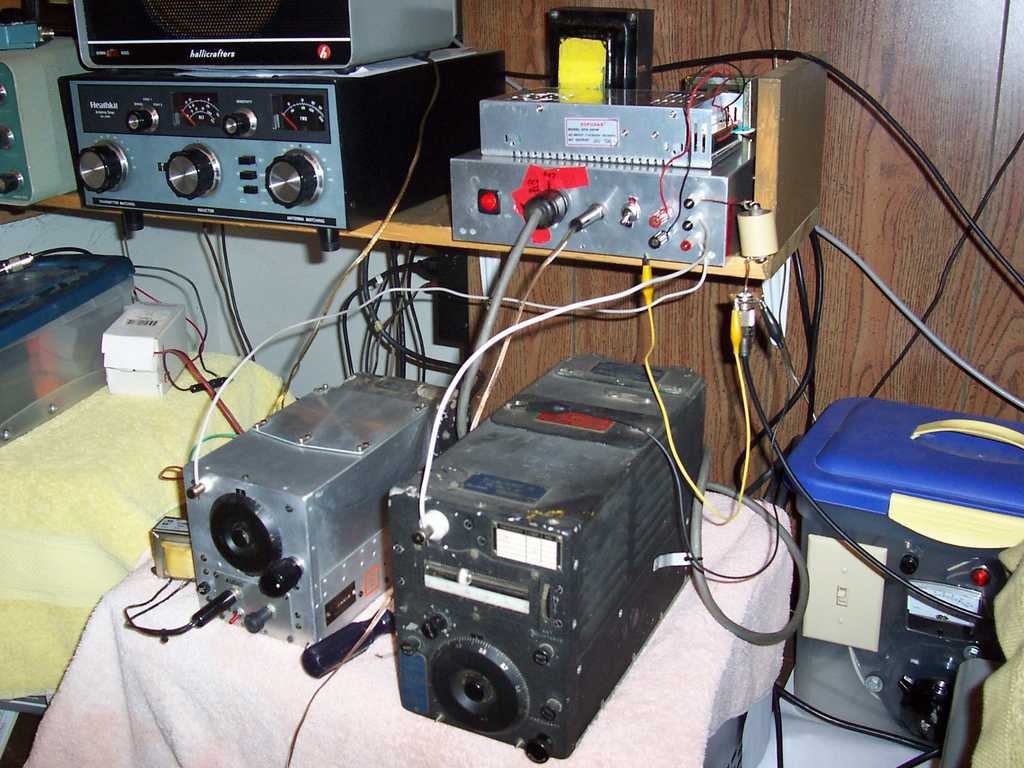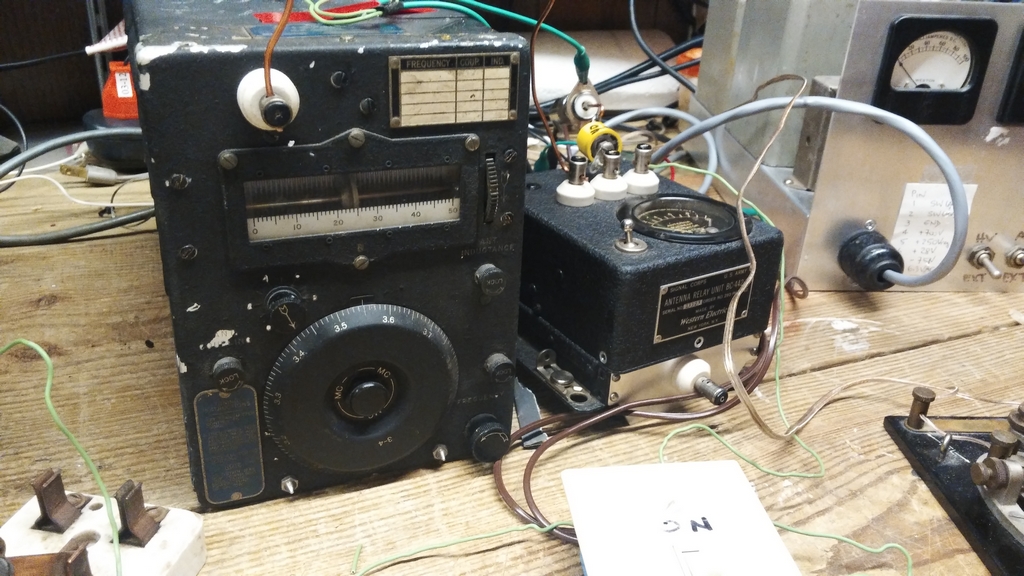|
The receivers as well as the transmitters can be powered by their dynamotors. Due to the noise (and heat in the summer - my shack is not air conditioned.....) I run everything off of power supplies.
The bottom shelf of the rack contains two transmitters on the left and three receivers on the right.
The transmitters are a BC-459-A (7.0 – 9.1 Mc.) and BC-696-A (3.0 – 4.0 Mc.).
The receivers are a BC-455-B (6.0 – 9.1 Mc.), BC-453-B (190 Kc to 550 Kc), and a BC-454-B (3.0 – 6.0 Mc.). The BC-453 is a Navigation Beacon receiver.
Notice the white tape on the receiver dials. These signify 7.040 to 7.060 Mc. and 3.540 to 3.560 Mc.; each a 20 Kc. inverval represented by just under 1/8 of an inch on the dial! On top of that, the selectivity is in excess of 10 Kc, so you'll always be hearing multiple tones from different CW signals and you have to be able to concentrate on the one you're working - your "Cerebral Filter" needs to be in top shape!
The top of the rack contains, starting from the left, the
BC-442-A antenna relay (containing an RF Ammeter), and an
antenna tuner & monitoring box. The gray panel contains (top) the
BC-451-A transmitter control box, and (bottom) the
BC-450-A receiver control box.
Behind the gray panel is the BC-456 Modulator.
While a straight key can be plugged into a jack in the bottom of the BC-451 transmitter control box, the flat button on top of the box is the "built in key"!
The antenna tuner contains a 4:1 UNUN in series with an old Hallicrafters HT-37 tuning capacitor. The capacitor provides the nominal 50 pF on 40M and 200 pF on 80M.
The bottom meter on the "monitoring box" displays plate current. The three position switch in the center allows me to view plate, screen, or oscillator voltage on the top meter. This handy little unit is well worth the time to build -- it is indispensible in troubleshooting a transmitter problem in the rack!
The little black box between the "monitoring box" and the BC-456 modulator is just a switch that allows me to select which of the receivers gets high voltage. Each receiver has a DM-32 base on it that connects to the switch which connects to an HP-23 power supply via a dropping resistor (actually a pot). I adjust the pot to bring the receiver HV down to about 190V. 28V To the receivers is inserted in the standard way, being injected into the FT-220A rack and then on to the BC-450 receiver control box.
550V HV For the transmitter is inserted into the two DM-33 Dynamotor pins on the BC-456 Modulator. 28V is inserted normally into the BC-456 modulator which then goes to the BC-451.
"Kerchunking" is a word that suits Command Sets! When a transmitter is selected via the BC-451, two relays in the selected transmitter will close, and if the other was previously selected the two relays in it will open. You get a rather loud "Kerchunk" as you switch between transmitters.
Each time you close the straight key, two relays will close. One is located in the BC-456 and supplies HV to the transmitter, and the other is in the BC-442 antenna (TR) relay unit! In case that wasn't clear, these two relays close and open for dot or dash you send!
I do not use the receiver rack’s mute line as I need a side tone for CW, so I’m actively changing the gain control on the receiver control box when transmitting or receiving. It works pretty well...and headphones are a must!
Stay tuned for updates!
| 



